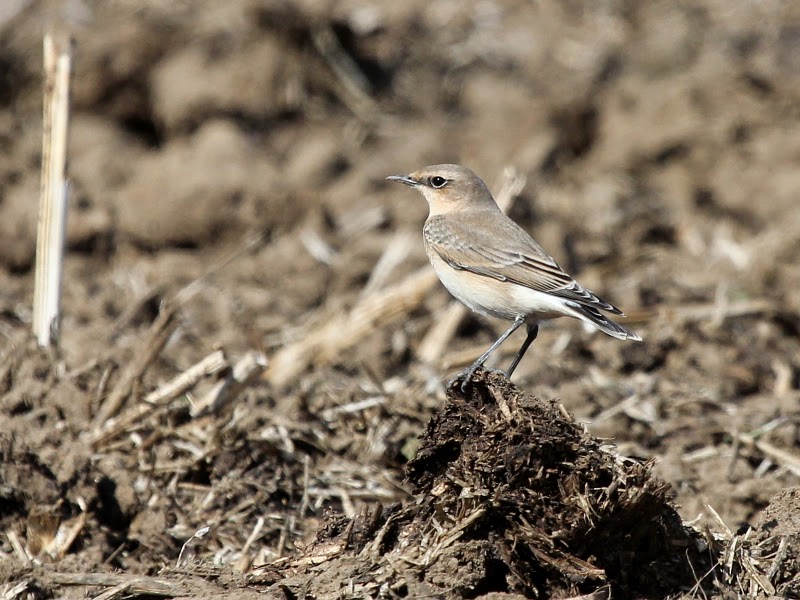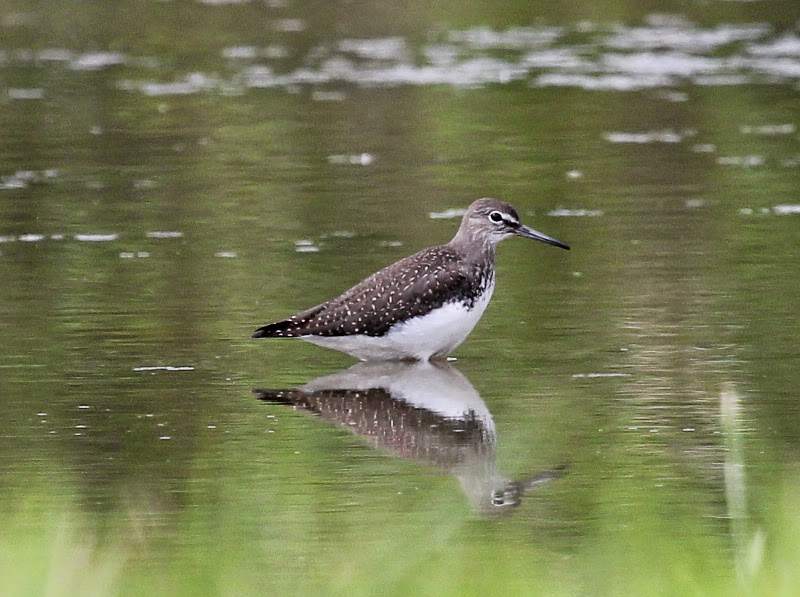The past couple of days promised much with brisk winds from an easterly quarter blowing. It certainly produced a decent seawatch that yielded three Long-tailed Skuas for me and an additional bird after I left. These comprised a couple of juveniles at 0739 and 0800 and then a splendid adult at 1120. Always a great joy. Arctic Skuas were on the move, but as usual the numbers were much lower here than those recorded further south in the North Sea. Fewer Manx Shearwaters and Fulmars were moving, but a Sooty Shearwater was an early highlight. Despite grilling the large numbers of Kittiwakes streaming north, eventually totalling over 4000 for the day, I couldn't detect the hoped for Sabine's Gull amongst them.
So, all very good but the reports of Pied Flycatchers, Redstarts and a scattering of scarce migrants elsewhere inspired me to check the bushes. A couple of hours later I had located a Whinchat, a Willow Warbler and well, not a lot else!
Returning to the hut for some more seawatching I had a text from Micky informing he that he had found a 1w Caspian Gull just south of Crook Ness. So a yomp along the cliffs was in order to see that, but somehow gulling just seemed plain WRONG on a day with such a brisk easterly blowing! It was a fair way off, but scope views were pretty decent and it looked the real deal.
This morning Micky and I undertook the first proper ringing session for a while but it was to prove a little disappointing with the catch consisting primarily of Chaffinches, Robins and tits, all of whom clearly hadn't come far. Whitethroat, Lesser Whitethroat and Willow Warbler were the only 'proper' migrants we caught although a Pied Wagtail was new for the ringing list and a Spotted Flycatcher feeding along the fence line was a pleasant diversion between net rounds. The sea yielded another juvenile Long-tailed Skua, a stream of Kittiwakes and Common Terns were moving north along with a reasonable movement of Teal and Common Scoter. A few waders were also trickling through with Ringed Plover, Golden Plover, Curlew, Knot all noted heading south.
 |
| Lesser Whitethroat - a retrap from July last year and presumably a local breeder |
 |
| Willow Warbler |
 |
| Spotted Flycatcher |

















































